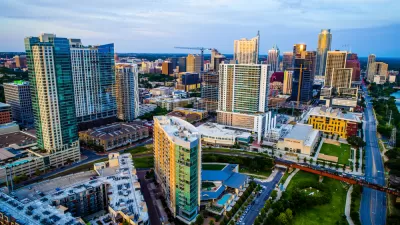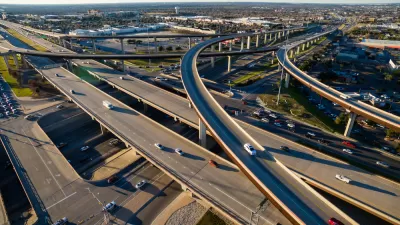In a letter to the department, the city called for an increased focus on shifting demand away from single-occupancy vehicles and boosting other forms of transportation.

The city of Austin is criticizing a Texas Department of Transportation (TxDOT) plan to expand Interstate 35 through the city's center, which local officials feel does not "sufficiently respond to the needs identified by the City of Austin," as reported by Bryce Newberry for KVUE. In a letter to the department, assistant city manager Gina Fiandaca "outlined concerns over safety, connecting East and Central Austin, and how well the plan would address congestion in the region." Last Thursday, "the city council approved a resolution urging TxDOT to take 'positive action' on the City’s comments and directing the city manager’s office to launch an independent public input process on the project."
The letter said "TxDOT’s proposal does not meet Austin’s Strategic Mobility Plan, approved by the council in 2019, which addresses the next 20 years of transportation in the capital city. It forecasts that by 2039, 50% of Austinites will drive alone, while the other 50% will use other forms of transportation, such as bikes or transit." Fiandaca went on to write, "we cannot build ourselves out of congestion by expanding unmanaged capacity for single occupancy vehicles" through expanded freeways, but "must do everything possible to shift travel demand from driving alone to other forms of transportation." Austin "is urging TxDOT to account for things like high-capacity transit or bicycle systems with the expansion project." Other critics have called the project, as originally proposed, a "generational failure" that fails to look to the future of transportation.
TxDOT has faced similar pushback from Houston, where a controversial project to expand I-45 has drawn concerns from local activists, as well as a lawsuit.
FULL STORY: Austin council raises concerns over TxDOT’s I-35 expansion proposal

Maui's Vacation Rental Debate Turns Ugly
Verbal attacks, misinformation campaigns and fistfights plague a high-stakes debate to convert thousands of vacation rentals into long-term housing.

Planetizen Federal Action Tracker
A weekly monitor of how Trump’s orders and actions are impacting planners and planning in America.

Chicago’s Ghost Rails
Just beneath the surface of the modern city lie the remnants of its expansive early 20th-century streetcar system.

Bend, Oregon Zoning Reforms Prioritize Small-Scale Housing
The city altered its zoning code to allow multi-family housing and eliminated parking mandates citywide.

Amtrak Cutting Jobs, Funding to High-Speed Rail
The agency plans to cut 10 percent of its workforce and has confirmed it will not fund new high-speed rail projects.

LA Denies Basic Services to Unhoused Residents
The city has repeatedly failed to respond to requests for trash pickup at encampment sites, and eliminated a program that provided mobile showers and toilets.
Urban Design for Planners 1: Software Tools
This six-course series explores essential urban design concepts using open source software and equips planners with the tools they need to participate fully in the urban design process.
Planning for Universal Design
Learn the tools for implementing Universal Design in planning regulations.
planning NEXT
Appalachian Highlands Housing Partners
Mpact (founded as Rail~Volution)
City of Camden Redevelopment Agency
City of Astoria
City of Portland
City of Laramie




























